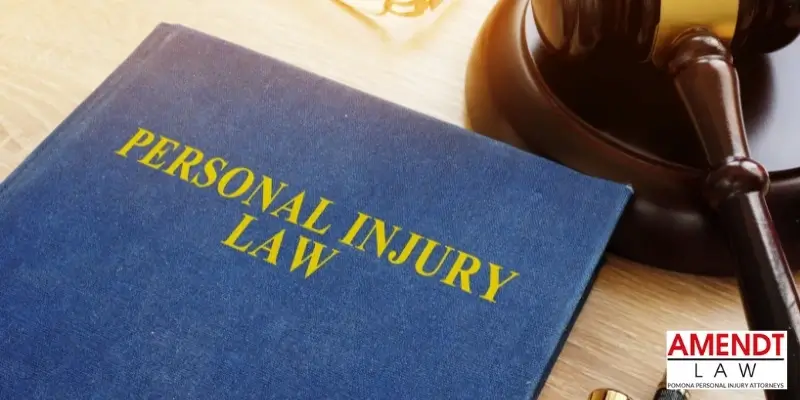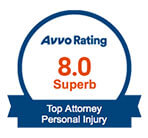Call Us : (909)-766-1994
How To Prove Fault in a Personal Injury Case in California?

When you experience an injury due to another party’s actions, it can have traumatic effects both mentally and physically. State laws can be complex, making pursuing legal compensation for your pain seem nearly impossible. Understanding how to prove fault in a personal injury case in California is critical for injured individuals pursuing compensation.
Proving fault requires clear and convincing evidence of the other party’s negligence. The state follows a comparative negligence model, meaning multiple parties can share fault for an incident. At Amendt Law, we offer free consultations to clients throughout California in personal injury claims.
Types of Negligence Recognized Under California Law
California Civil Code § 1714 holds individuals responsible for their actions when those actions harm others due to negligence or carelessness. Fault is not based entirely on whether someone intended harm but rather on whether they failed to use reasonable care.
Negligence in California takes multiple forms. Proving fault requires identifying the type of negligence involved and demonstrating how it led to the injury. Common types include:
- Ordinary negligence. This type of negligence is when someone didn’t act the way a reasonable person would in a similar situation. For example, a driver can cause a crash because they are texting. In 2022, in California, 148 people were killed due to distracted drivers.
- Gross negligence. This is when someone showed extreme carelessness or did something dangerous on purpose. For example, if a doctor performs surgery while under the influence of alcohol.In 2022, California awarded a total of $199.32M to victims of physician-based medical malpractice. Victims of gross negligence might be able to get extra compensation, called punitive damages. Punitive damages are extra money a court may award to the victim in order to punish someone for gross negligence.
- Comparative negligence. If more than one party is to blame for the incident, comparative negligence rules are applied. Under this rule, you’ll only receive compensation based on your percentage of fault for the incident.For example, if you’re awarded $100,000 but are found to be 70% at fault, you’ll only receive $30,000. Unlike other states, California allows claims to be pursued even if the person filing is found to be 99% at fault for the incident.
- Vicarious negligence. This is when someone can be held legally responsible for another person’s actions. For example, if a nanny hurts a child due to careless supervision, the nannying agency may also be liable.
Types of Evidence to Support a Fault Claim
Evidence is the key to any personal injury claim. Without it, fault cannot be established. California courts require the person filing, the plaintiff, to provide proof, meaning they must show that the other party’s negligence more likely than not directly caused the injury. This process can be incredibly stressful and time-consuming for those who don’t have experience with personal injury cases.
Seeking a skilled and knowledgeable firm to help gather evidence is crucial. Common types of evidence used to prove fault include:
- Photographs of the scene. Photos of injuries, property damage, and road conditions can help clarify the circumstances.
- Video footage. Surveillance videos, dashcam recordings, or cell phone videos often show the accident in real-time.
- Police and incident reports. Official reports document witness statements, initial findings, and violations of traffic laws.
- Eyewitness testimony. Statements from people who saw the event can confirm details and contradict inaccurate claims.
- Medical records. These documents prove the extent and timing of injuries and link them to the incident.
- Professional testimony. Medical professionals and accident reconstructionists can aid in explaining complex details.
FAQs
What Are the Legal Deadlines for Personal Injury Claims in California?
In California, you usually have two years from the date of your injury to file a personal injury claim. If you miss this deadline, you lose the right to seek compensation. There are different deadline requirements for any claims involving a government agency, such as being hit by a city vehicle. Amendt Law focuses on personal injury claims and can help ensure that filing requirements are fully met.
What Is Needed to Prove Damages in a Personal Injury Case?
To receive compensation in a personal injury case, the injured person must prove they suffered actual damages. Damages are the financial and personal losses caused by the incident. These include:
- Medical bills
- Treatment summaries
- Pay stubs showing lost wages
- Repair estimates for damaged property
- Photos of injuries
These documents help show the cost and daily impact of the injury. All damages must be clearly tied to the incident and shown to be reasonable in order to support a successful claim.
What Is the Role of Causation in Personal Injury Cases?
The injured person must show that the other party’s actions directly caused the harm. There are two types of causation: proximate cause and actual cause. Actual cause means the harm would not have happened without negligence. Proximate cause means the harm was a foreseeable result of that act. For example, if an employee uses a company-supplied ladder at their workplace that has a broken rung and falls. In 2023, there were 363,000 private industry injuries and illnesses in California.
What Should You Do Immediately After an Injury?
If you’re injured, the first priority is getting medical attention. Your health and safety are a priority. Then, if you’re able, take photos of the scene, your injuries, and any property damage. Get names and contact information for any witnesses. File a police or incident report. Avoid discussing the incident with the other party or their insurance until you’ve spoken to a lawyer. Do not post details online. These early steps help preserve critical evidence needed to prove fault.
Legal Guidance From a Trusted San Dimas Law Firm
Understanding how to prove fault in a personal injury case in California is essential for building a successful claim, but it can be difficult to do on your own. Each part of your claim has to be supported by credible evidence. Amendt Law provides knowledgeable assistance for injured individuals in California. For help navigating personal injury claims, contact us today to set up a free initial consultation.


